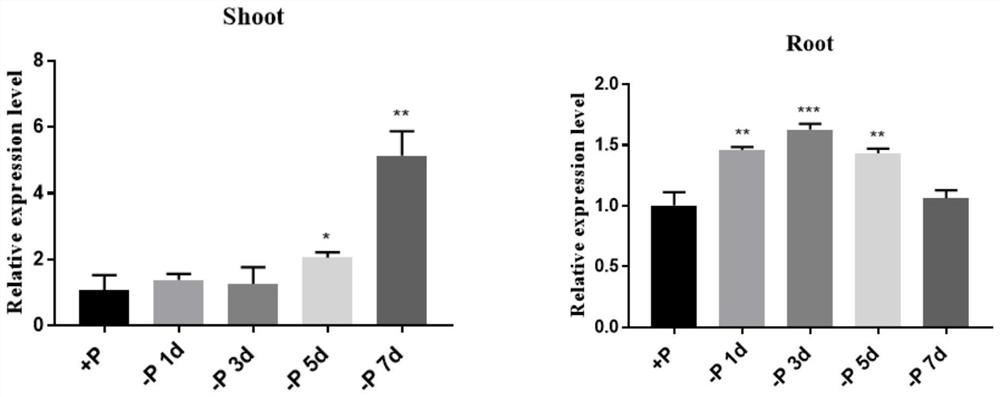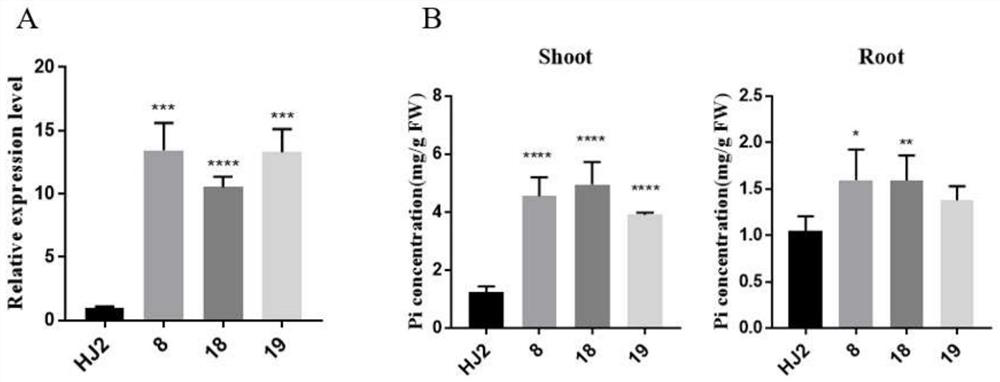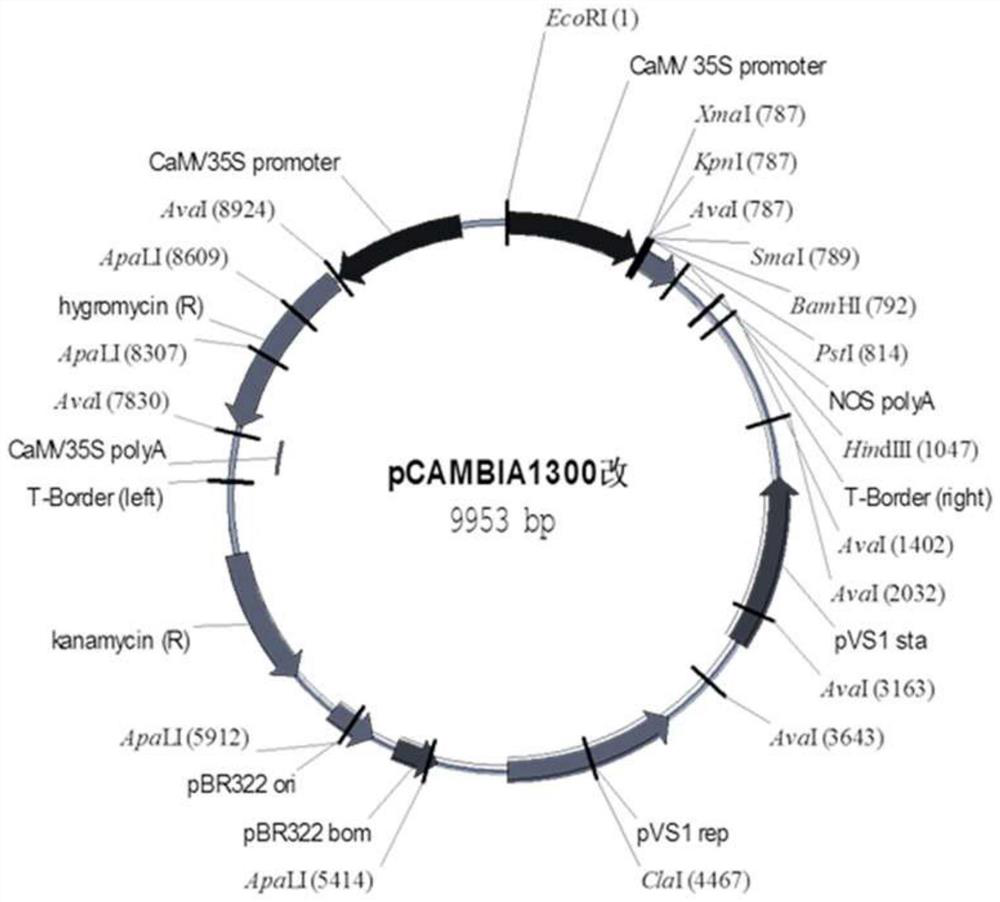OsWRKY12 and application thereof in efficient phosphorus breeding of rice
A technology for rice and uses, applied in the field of rice OsWRKY12 gene identified by reverse genetics to improve the phosphorus uptake efficiency of rice, can solve the problems that the regulatory mechanism has not yet been clarified
- Summary
- Abstract
- Description
- Claims
- Application Information
AI Technical Summary
Problems solved by technology
Method used
Image
Examples
Embodiment 1
[0049] Embodiment 1, rice RNA extraction
[0050] (1) Rice cultivation
[0051] The wild-type Nipponbare seeds of rice were soaked in 1% dilute nitric acid for 16 hours to break the dormancy state. Seeds are sown on gauze boards, normal nutrient solution (recipe is shown in Table 1), and transplanted to an orifice plate supported by sponge balls after 7 days. Change the nutrient solution every 7 days. According to the needs of the experiment, select an opportunity to sample and extract RNA. For the RNA required to study the expression pattern of the OsWRKY12 gene, it was divided into 2 groups after transplanting into the well plate. One of the groups was used as a control group and cultured with normal nutrient solution; the other group was cultured with phosphorus-deficient nutrient solution (Stock-2 in Table 1 was reduced by 90%, and KCl was supplemented). After 7 days of treatment, the rice seedlings cultured in the normal nutrient solution and the phosphorus-deficient ...
Embodiment 2
[0093] Embodiment 2, construction of OsWRKY12 overexpression vector
[0094] Using the cDNA obtained in Example 1 as a template and OsWRKY12-F2: GGTACCCGGGGATCCATGCGCGGCCCGCTGCTGCT; OsWRKY12-R2: ACGCTGCAGGTCGACCTATAGCGAGAGCCGTCGCC as primers, use the Phanta MaxSuper-Fidelity DNA Polymerase (Nanjing Novaz Biotechnology Co., Ltd.) kit to amplify the desired fragment . Amplification system:
[0095]
[0096] The obtained fragment and the pCAMBIA1300 vector were digested and ligated with BamHI and SalI; transformed into Escherichia coli DH5α, picked the bacteria, expanded and shaken to extract the plasmid, and after sequencing was completely consistent with the sequence of SEQ ID NO:1, the 35S-1300-OsWRKY12 overexpression vector was obtained ( image 3 ). The vector was transformed into Agrobacterium competent EHA105 for transgenic rice.
Embodiment 3
[0097] Embodiment 3, rice transgene and T 0 Screening of positive transgenic seedlings
[0098] 1. Transgenic rice
[0099] 1 Disinfection of explants
[0100] (1) Select plump wild-type Nipponbare seeds, remove glume, and be careful not to damage the seeds;
[0101] (2) Place the seeds in a 50ml sterilized centrifuge tube, use 75% ethanol to sterilize the seeds, shake the table for 1 min, and wash twice;
[0102] (3) Use 30% sodium hypochlorite solution to sterilize the seeds, shake the bed for 30 minutes;
[0103] (4) Wash the seeds 3 times with sterilized water, shake the bed for 5 minutes each time.
[0104] 2 Induction of callus
[0105] (1) On the ultra-clean workbench, use sterilized paper towels to dry the seeds, put 15 seeds into each callus induction medium; use 0.22 μm adhesive tape (3M company) to seal the medium, and place it at 28 ° C for cultivation Induction box for 4 weeks;
[0106] (2) After 4 weeks, pick the light yellow calli and put them into the su...
PUM
 Login to View More
Login to View More Abstract
Description
Claims
Application Information
 Login to View More
Login to View More - R&D
- Intellectual Property
- Life Sciences
- Materials
- Tech Scout
- Unparalleled Data Quality
- Higher Quality Content
- 60% Fewer Hallucinations
Browse by: Latest US Patents, China's latest patents, Technical Efficacy Thesaurus, Application Domain, Technology Topic, Popular Technical Reports.
© 2025 PatSnap. All rights reserved.Legal|Privacy policy|Modern Slavery Act Transparency Statement|Sitemap|About US| Contact US: help@patsnap.com



